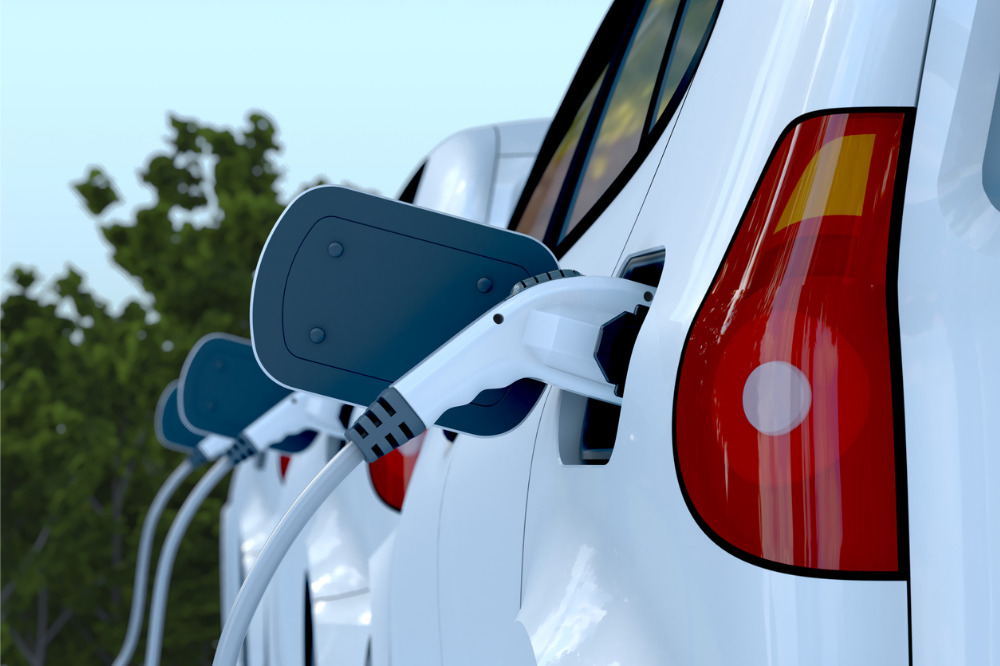Electric vehicles: What risks do they pose at home?

The first thing EV owners must consider is how they’re going to charge their vehicles. There are two common types of home charging solutions. Level 1 charging is a straightforward plug-in of the EV into any standard 120V outlet. This requires no electrical modification, and it typically takes about 20 hours to reach a full charge. Meanwhile, level 2 charging units are sold separately from the car and require installation by an electrician as they are plugged into a 240V outlet, which allows for a much faster charge.
“Charging stations are equipped with safety devices such as GFCIs, which are ground fault circuit interrupters […] which will identify if there’s a short in the electric and will cut the charger off to minimize the risk,” said Naughton. “There is a risk of electric shock and electrocution, but there are certain safeguards that are automatically built into the equipment, so the risks are typically low.
“But when you are charging an EV, it’s important to check for any damage to the charging station itself because that’s where a potential electrical short could come into play, and an electrocution exposure could exist by means of that. Any damage to the hose, poor maintenance, or exposed interior conditions of the charging unit would be an indication that it needs repair from damages.”
Read next: Electric vehicle cybersecurity: Business owners worried about the risks
EVs run on lithium-ion batteries, which can cause a significant fire hazard if damaged. The concern with lithium-ion batteries, according to Naughton, is not that they’re more likely to ignite, but that when they do ignite, they burn very hot, they’re very hard to extinguish, and they have the potential to reignite. To mitigate this risk, many EV car manufacturers are enclosing lithium-ion batteries and placing them within the vehicle where they’re less susceptible to damage – but that then makes it difficult for EV owners to observe whether their batteries are in good working order.
“If there is damage to a lithium-ion battery, it can produce thermal runaway [and increase the risk of electrical short and fire],” Naughton emphasized. “It is good practice to make sure that you are bringing your car in to be properly maintained as per the manufacturer’s guidelines. Those carrying out the maintenance need to be certified to work on EVs, and they need to inspect the quality and condition of the lithium-ion batteries.
“If there is damage to an EV – for example, if a driver is involved in a collision – it’s important not to park the vehicle inside your garage [in case there has] been any damage to the lithium-ion battery. It is not good practice to park the damaged vehicle at home. Keep it a safe distance away and take it to a repair shop as soon as possible.”
Read next: Tesla recall – what’s gone wrong?
A few other home safety EV risk management tips that Naughton shared included: not using an extension cord for prolonged use (during level 1 charging), and storing all components and devices related to EV charging units, including the connection hoses, off the ground and out of reach of children to reduce electrocution risk and prevent slips, trips and falls.
As for insurance, while homeowners are not required to notify their insurer if they purchase an EV – they’re not being priced any differently by underwriters at this point – there is some useful information that homeowners should share with their agent or broker, according to Naughton.
“What you may want to identify with your broker, which is a great best practice, is the control features you have in your home for fire exposures in general,” she told Insurance Business. “Smoke detectors in your home, heat detectors in your garage and the crawl space, and a residential sprinkler system in your home – those are all great best practices for fire mitigation [… and] usually carriers are recommending and giving credit for protection devices because they help mitigate risk.”





